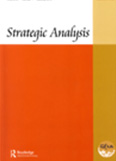Border Management: Dilemma of Guarding the India-Bangladesh Border
India shares 4096 km (Assam-262 km, Tripura-856 km, Mizoram- 18 km, Meghalaya-443 km, West Bengal-2,217 km) long land boundary with Bangladesh (earlier East Pakistan). The Indo-Bangladesh border, which came into existence after India’s partition in 1947 gave rise to many questions as to the interpretation and implementation of the boundary so drawn. An effort was made to solve the outstanding border disputes with erstwhile East Pakistan and the Nehru-Noon Accord was signed in 1958. While some of the disputes were solved, many continued to haunt even after Bangladesh came into existence.
- Published: January 2004









